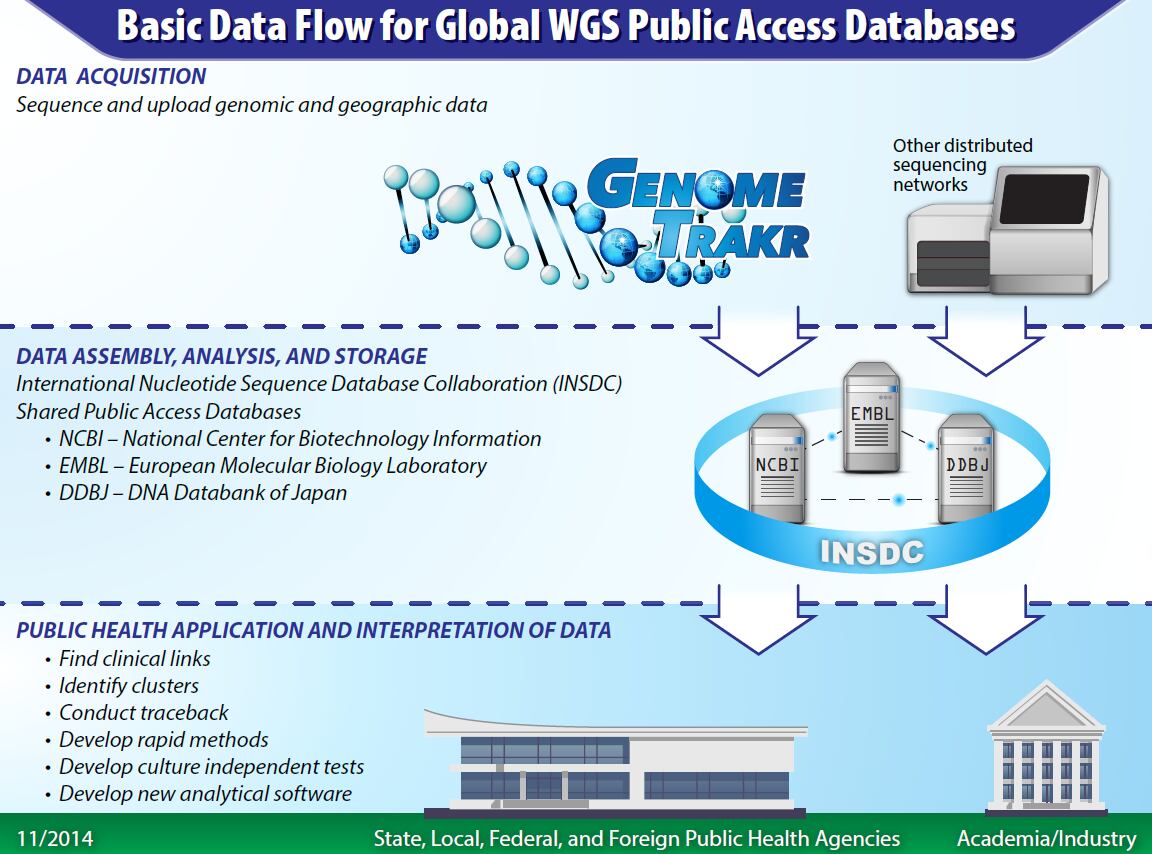More than 10,000 Salmonella isolates and 2,600 Listeria isolates have been sequenced as of last month.
GenomeTrakr consists of 13 federal and state health and university labs, three outside the US, and collaborations with academic researchers.
The National Center for Biotechnology Information (NCBI) at the National Institutes of Health provides data curation and bioinformatic analyses.
Trace back to source
Alice Welch, director of FDA’s technology transfer program, said GenomeTrakr enables comparison of bacterial pathogens that cause foodborne diseases and to trace them back to their sources faster and more precisely than traditional methods.
“It can even help public health officials determine which ingredient in a multi-ingredient food is causing the outbreak—so that we can get contaminated food out of the food supply.”
A report from the European Food Safety Authority (EFSA) recommended WGS be used as soon as possible to exploit its potential but also highlighted areas of concern.
It said the biggest threat to successful implementation is not technical but related to the sharing of data and political, legal and psychological obstacles.

According to the Centers for Disease Control and Prevention (CDC), foodborne disease outbreaks are responsible for about 48 million illnesses, 325,000 hospitalizations, and 3,000 deaths in the US.
The annual toll for Salmonella poisoning is one million illnesses, 19,000 hospitalizations, and nearly 400 deaths.
Pathogen evolution
Pathogens evolve very quickly and have thousands of genetic variations, said Welch in an FDA Voice blog.
“After spending time in a particular geographic location, a pathogen like Salmonella begins to acquire unique genetic signatures that identify it as coming from that location.
“Until recently, some strains of Salmonella have looked much the same to us, no matter where we found them, because some of the older methods of testing have been unable to distinguish between certain strains of pathogens.
“But WGS can detect unique signatures within and between species with far greater precision than previous methods, which makes it one of our biggest secret weapons in tackling foodborne illness outbreaks.
“The signatures can often tell us if a Salmonella that has contaminated a certain part of the food supply is from the US West Coast, New England, or Germany.”
The technology is being used to identify pathogens isolated from food or environmental samples. These can be compared to clinical isolates from patients.
If the pathogens found in the food or production environment matches that from the sick patients, a reliable link between the two can be made, which helps define a foodborne illness outbreak.
It has traditionally used methods such as Pulsed Field Gel Electrophoresis (PFGE), but there are some strains of Salmonella spp. it is unable to differentiate, while WGS can differentiate virtually all strains of foodborne pathogens, whatever the species.
The first state public health lab collaboration was in February 2012 and the technology has already been used in foodborne illness investigation outbreaks.
